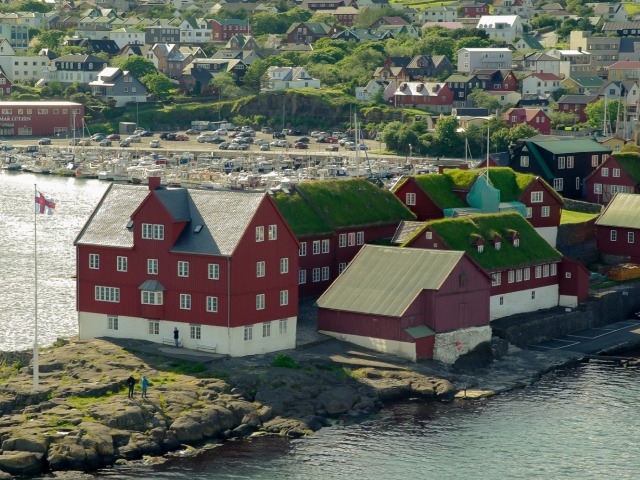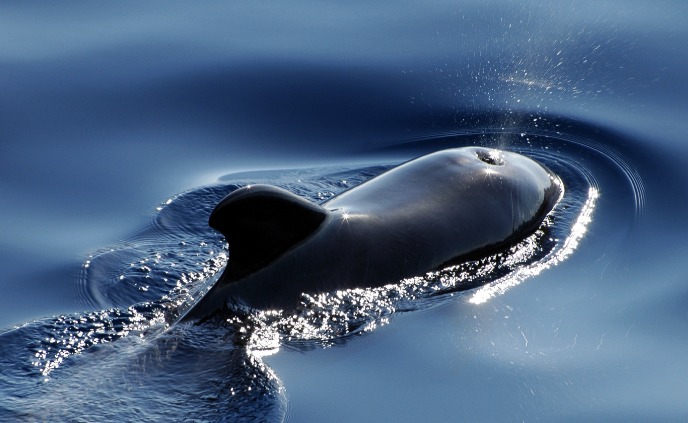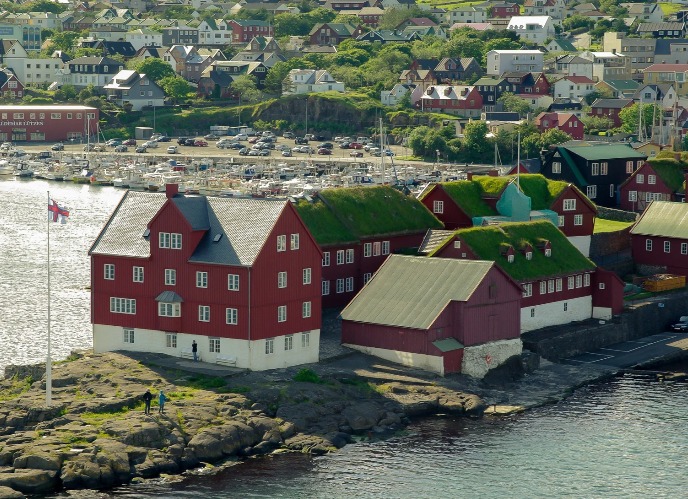Killing for Care: Pilot Whaling in the Faroe Islands

Pilot whaling has been a part of Faroese culture since at least the sixteenth century (Fielding et al. 2015; Fielding, 2010), being one of the best documented and arguably most sustainable harvesting practices in the world. Every year the Faroese people conduct roughly six whale hunting events known as the grindadràp (Fielding et al. 2015). Though the practice has evolved over the past few centuries especially since the 1980s (Singleton & Fielding, 2017; Singleton 2016), grindaráp remains a culturally symbolic and practical practice in Faroese society (Bogadóttir & Skarõhamar 2017; Fielding et al. 2015). Despite recent efforts to ensure humane and sustainable practices criticism is still afoot largely from non-domestic actors, which usually rests upon three arguments: grindadráp is unnecessary for sustenance; killing whales is uncivilised and cruel; and finally pilot whales are contaminated from ocean pollutants such as PCBs and mercury and therefore unfit for human consumption (Bogadóttir & Skarõhamar 2017). Considering this, this piece deconstructs the practise of grindadráp by adopting the concepts of care and control as theorised in Arora et al. (2020) paper: Control, care, and conviviality in the politics of technology for sustainability. By deconstructing grindadráp into the categories of killing, distribution and sustainability it is determined that the practice largely falls under the conceptualisation of care despite nuance in understanding caring for non-human animals and hunting and mixed hierarchical and horizontal practices.
Conceptualising care and control
Largely, the central contentions lying between the two concepts of care and control are modernist and post-modernist ideals of relationships between humans, communities, nature and non-human animals. This was shown to be displayed as a relationship of control which was: to separate, categorise, objectify and sort into hierarchical systems; versus care which was shown to be underpinned by an interconnected dependence between subjects in a collective, horizontal and egalitarian fashion (Arora et al, 2020). Table 1 displays how these notions of care and control were conceptualised in the paper and what we explore here in relation to grindadràp. Furthermore, by deconstructing the practice into three categories – killing, distribution and sustainability – it is possible to gain a greater understanding and facilitate the analysis.
Table 1: Features of Care and Control
|
Control |
Care |
|
Technologies to control resource-use and exploit |
Practices to care for ecosystem and sustainable extraction |
|
Hierarchical |
Horizontal: different but equal |
|
Commodification |
Commons |
|
Decoupling humans from nature |
Interconnecting humans within nature |
|
Individualistic |
Egalitarian |
The kill: inhumane or the natural order, who decides?
During grindadráp, men and some women will abandon daily activities and work commitments and rush to the shores holding knives, ropes and hooks to kill whales and share the meat amongst the local community (Singleton & Fielding, 2017). The method of slaughter is known as drive style whaling, where entire pods of whales are pursued by boats and herded to the strand and killed (Fielding, 2015). While whaling in the Faroe Islands has been around for centuries, the killing methods have developed substantially since the 1980s. Changes to the methods was partly due to increasing international pressure and disapproval of the cruelty of whaling, and mirrored some ongoing discussions within Faroese society (Fielding et al. 2015). This led to killing by spinal lance and a certification scheme required to participate in hunting the whales (Singleton & Fielding, 2017). These practices were introduced to inhibit the likelihood of inappropriate killing and unnecessary suffering of the whales (Fielding et al. 2015; Singleton and Fielding, 2017). It has been argued though the grindadráp appears to be a chaotic, violent and unruly event to outsiders – with fully clothed, shouting men wielding hooks, knives and rope into a blood stained ocean – the event is a carefully orchestrated hybrid of bottom up and top down organisation to create a highly regulated but traditional, efficient, humane and sustainable practice (Fielding et al. 2015). However, some argue that this is a distortion of the truth, citing immense suffering endured by highly intelligent and social beings (Mamzer, 2021). Mamzer (2021) argued that because of the whales' highly social behaviour the hunt renders some survivors disoriented, confused and looking for companions in bloodied water to eventually leave into the open sea, unknown whether they too will die as a consequence of stress. The author even goes as far to claim that this is representative of ritual killing and proposes that traditions need to change to ensure no harm to people or non-human animals.
This view would be deemed as naïve and imperialistic by the Faroese population, one that has been imposed on Faroese national culture and livelihoods from abroad (Singleton, 2016). It is often compared to other unsustainable and inhumane practices of industrial farming, fishing and whaling in other parts of the world (Bogadóttir & Skarõhamar 2017). Pro-whalers also draw on pollution that has caused more harm to whales than the whaling practices on the Faroe islands (Singleton, 2016). In addition, it is also clear to see the knowledge power nexus within this issue, where foreign opposition dominates what practices of hunting and agriculture are legitimate and acceptable in the twenty-first century. Though it is not always visceral knowledge to everyone that cows, lamb, pigs and other animals had to bleed to provide a dinner on their plate this does not make it untrue, this separates the consumer from the process of killing for meat and ultimately, humans from nature and reality of hunting (Bogadóttir & Skarõhamar, 2017). Therefore, if society must disagree with whaling in the Faroe islands then perhaps one would need to question the ethical questions surrounding killing animals for food in general.

Deciding on a fair share
After the hunt the next task is dividing the shares of the whale meat and blubber, first they will be counted and measured by the metingarmenn who present a tally to the sýslumaður who oversees divisions and determines the fair share among the community (Fielding et al. 2015). The sýslumaður will usually retreat to a temporary office – a donated workspace in a nearby building or house – and will carry out the calculations. Faroese law has a complex yet adaptable system of division. Special shares are usually given to the person who sighted the whales, grindaformenn (hunters) the metingarmenn (measure men), local schools and nursing homes and anyone that the sýslumaður deems to deserving (Fielding et al. 2015). The rest of the meat is then divided equally among the local community. At an appointed time, community members gather to hear the sýslumaður read the shares (Fielding et al. 2015). Thus, the meat from the whales is aimed at feeding the community and is not a commercialised practice. It has both been deemed as anarchic (Fielding et al. 2015) and embracing degrowth values (Bogadóttir & Skarõhamar 2017) because of its egalitarian nature. Though some scholars have commented that by giving more shares to the people directly involved in the hunt and processing reflects a sightly individualistic and meritocratic process (Singleton & Fielding, 2017). Although this was adopted in the community as it was agreed that it was fair that the people who gave up time and energy to commit to grindadráp should get more of the share (Joensen 2009: 144 in Singleton & Fielding, 2017). Thus through a system of bottom up and top down organisation this division is made possible.

Not a question of depletion but pollution
The Faroese have taken 900-1000 pilot whales annually for centuries with some variance, most notably, during the years surrounding WWII the take was much higher and more recently in 2008, no whales were taken at all (Statistics Faroe Islands 2008 in Fielding, 2010). Extensive records of the number of whales caught per year allows estimates to be inferred about the population which calculate the average annual take to be less than 1% of the population (Singleton & Fielding, 2017). The Faroese people are determined that the practice is sustainable and ensure that whale populations stay at a sustainable level (Bloch 2007: 56 in Singleton & Fielding, 2017). Afterall, the practice is designed to provide food to the community while not depleting the supply, this has proved to work for the people for the last 425 years with averages remaining roughly the same, thus it is unlikely that the Faroese whaling is threatened by overconsumption and resource depletion (Fielding 2010; Bogadóttir & Skarõhamar 2017). In addition, it provides the small islands with better food security and self-sufficiency and ensures that less meat is imported from abroad (Singleton, 2016), which would be adding substantially to emissions (Fielding 2010) and disempower the local communities. Despite this, it is the levels of toxic substances present in whale meat that deem grindadráp to be unsustainable. Ocean pollution means whale meat contains high levels of mercury and other harmful substances so it is no longer a healthy source of subsistence (Bogadóttir & Skarõhamar, 2017; Fielding 2010; Mamzer, 2021; Singleton, 2016). Considering this, it is ironic that it is not the controversial practice of grindadráp that is particularly problematic in relation to sustainability, but more so the nations contributing to ocean pollution and overconsumption that drives it, which unfortunately, does not exclude the Faroese population (Bogadóttir & Skarõhamar, 2017).
Categorising grindadráp
While issues such as this are rarely straightforward this section explores if Faroese grindadráp could be considered a practice that cares for or controls and exploits the natural environment considering the killing, distribution and sustainability of the practice. Figure 2 displays how grindadráp was analysed and categorised.
Figure 2. Categorisation of grindadráp
|
Control |
Care |
Results |
|
Technologies to control resource-use and exploit |
Practices to care for ecosystem and sustainable extraction |
Care |
|
Hierarchical |
Horizontal: different but equal |
Mixed |
|
Commodification |
Commons |
Care |
|
Decoupling humans from nature |
Interconnecting humans within nature |
Mixed |
|
Individualistic |
Egalitarian |
Care |
This analysis shows mixed results, though grindadáp largely falls under the conceptualisation of care rather than control. The main reason that this could not fall under care for each category is the nuance in what can be considered living in harmony with the environment and if this can include hunting animals when subsistence could be derived from plants rather than animals and if imports should be preferred over the consumption of animals to achieve this. In addition, though much of grindadràp operates as a horizontal and egalitarian practice, equal care perhaps cannot be extended to non-human animals as they could be seen as being dominated by humans and unfairly matched through the use of boats and weapons. In addition, there are some top down practices imposed and hierarchy within the hunt and the meritocracy reflected in the ‘hunters take’. Having said this, it widely represents a conceptualisation of care and distinctly different to the concept of control that seems to fit most industrial food practices.
Whaling as an act of care? Colonial limits to a definite answer
Grindadáp is a traditional practice that has been coined as a egalitarianism-hierarchy hybrid (Singleton & Fielding, 2017), one that has operated and adapted since the sixteenth century. It was part of sustaining human life for centuries within reproductive capacities. Though it has been deemed controversial by international public opinion, it is important to note the colonial power dynamics within this criticism. Grindadáp provides a sense of identity, culture, empowerment to a small island nation which aids sustainable harvesting and food security for the nation. The suffering of the whales can be contrasted with industrial farming and fishing which arguably causes more harm during the animals life course and is arguably not even needed to sustain human life. . However, the justification of suffering cannot be reduced to merely international comparison and therefore must be reflected upon. Although grindadáp largely falls under the conceptualisation of care rather than control, there are nuances and many factors to consider related to the sustainability, environmental and societal ongoing impacts. Ethical questions remain about the cruelty and harm imposed during the grindadráp and it is impertinent that answers to these questions are explored but do not reflect colonial control.
This text has been crafted by Emma Mayhew, student in the Research Master Spatial Sciences (ReMa) as part of the course 'Critical Approaches to Global Sustainability Challenges' at the University of Groningen, Faculty of Spatial Sciences. The course was taught by Ethemcan Turhan and Christian Lamker (Department of Spatial Planning and Environment) between February and April 2022 as an elective course for Master students in the programme Society, Sustainability and Planning (SSP) and other Master programmes of the Faculty and the University.
References
Bloch, D. (2007). Pilot whales and the whale drive. Tórshavn: H.N. Jacobsens Bókahandil.

